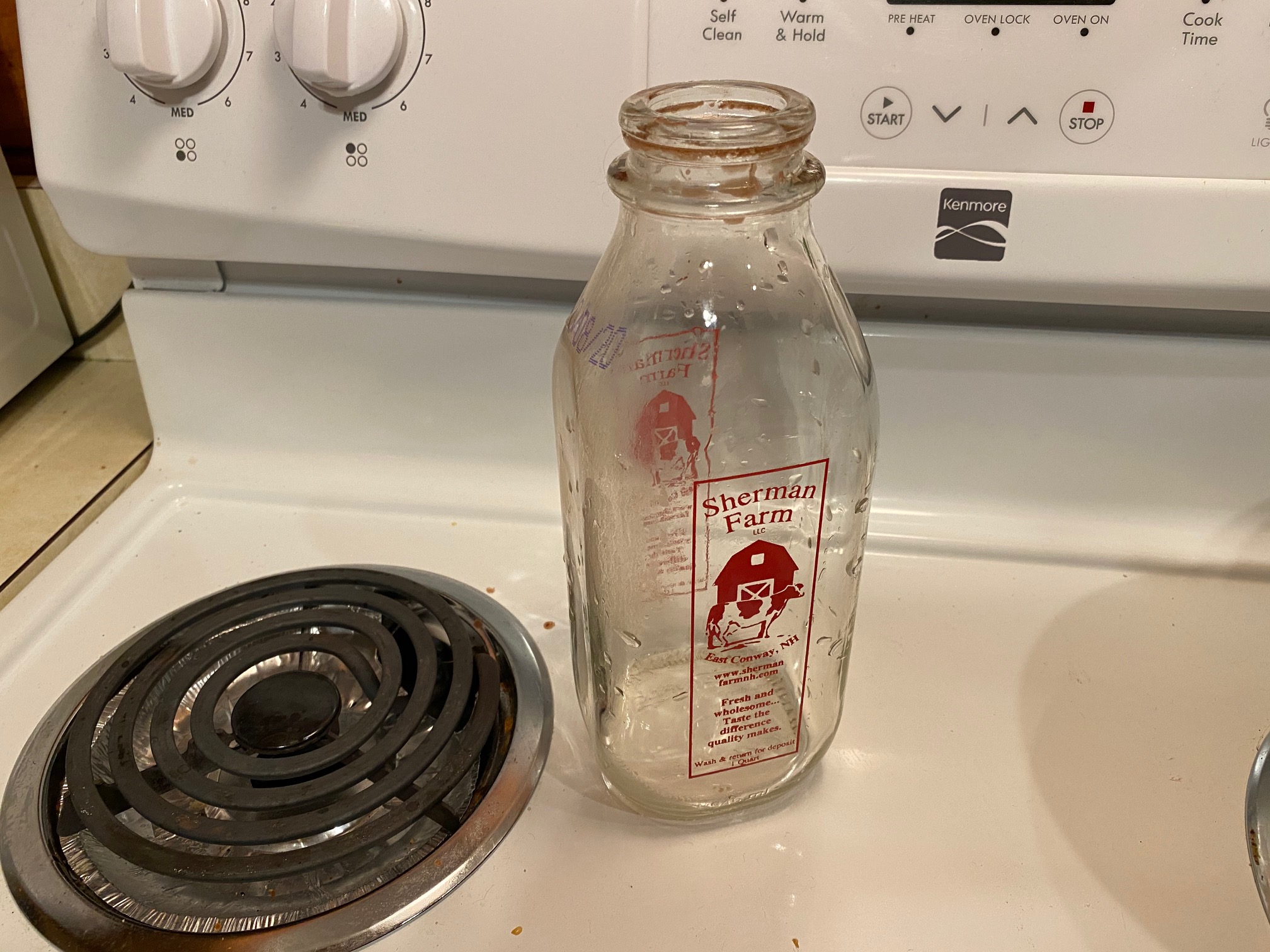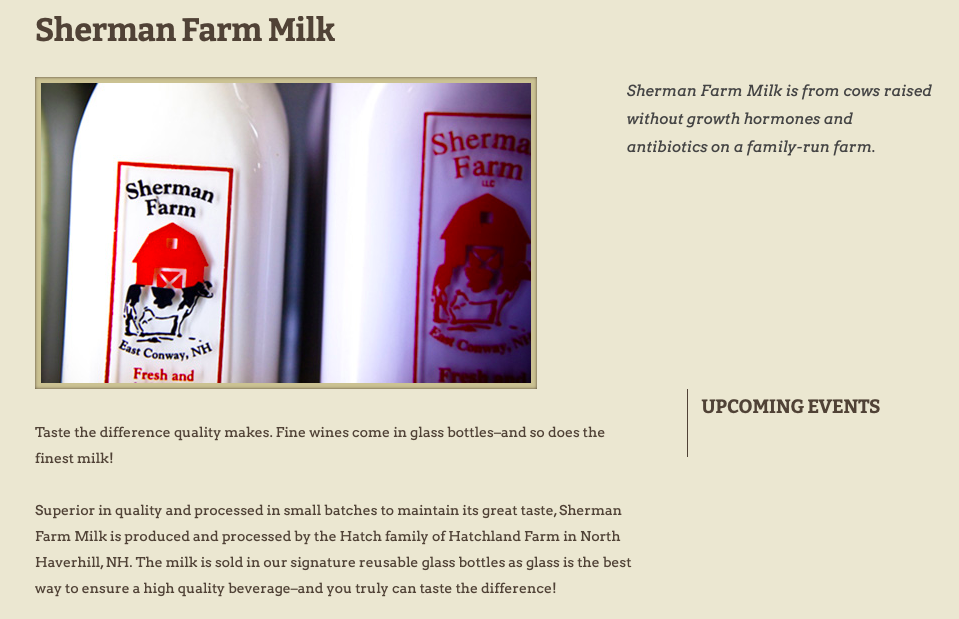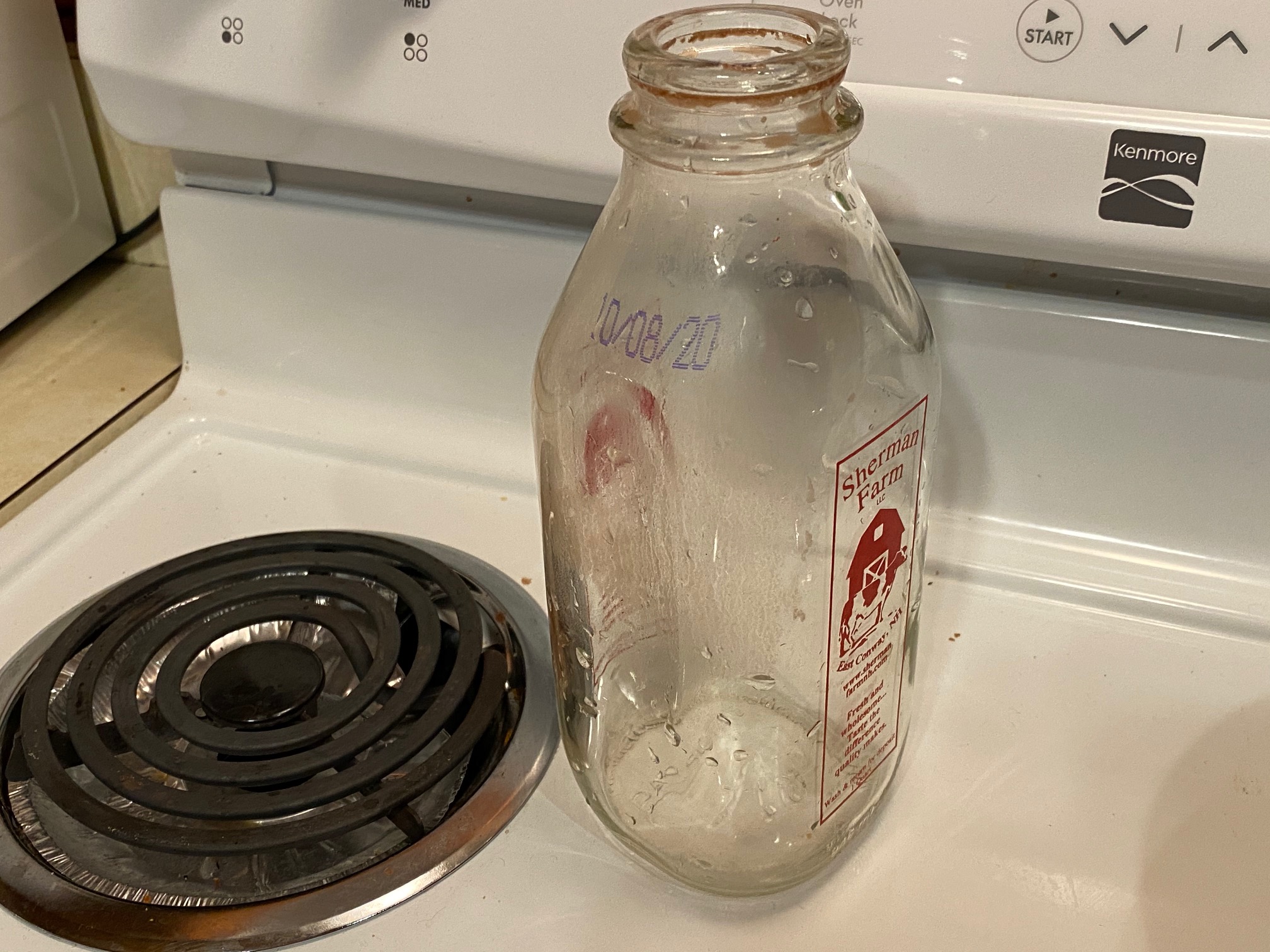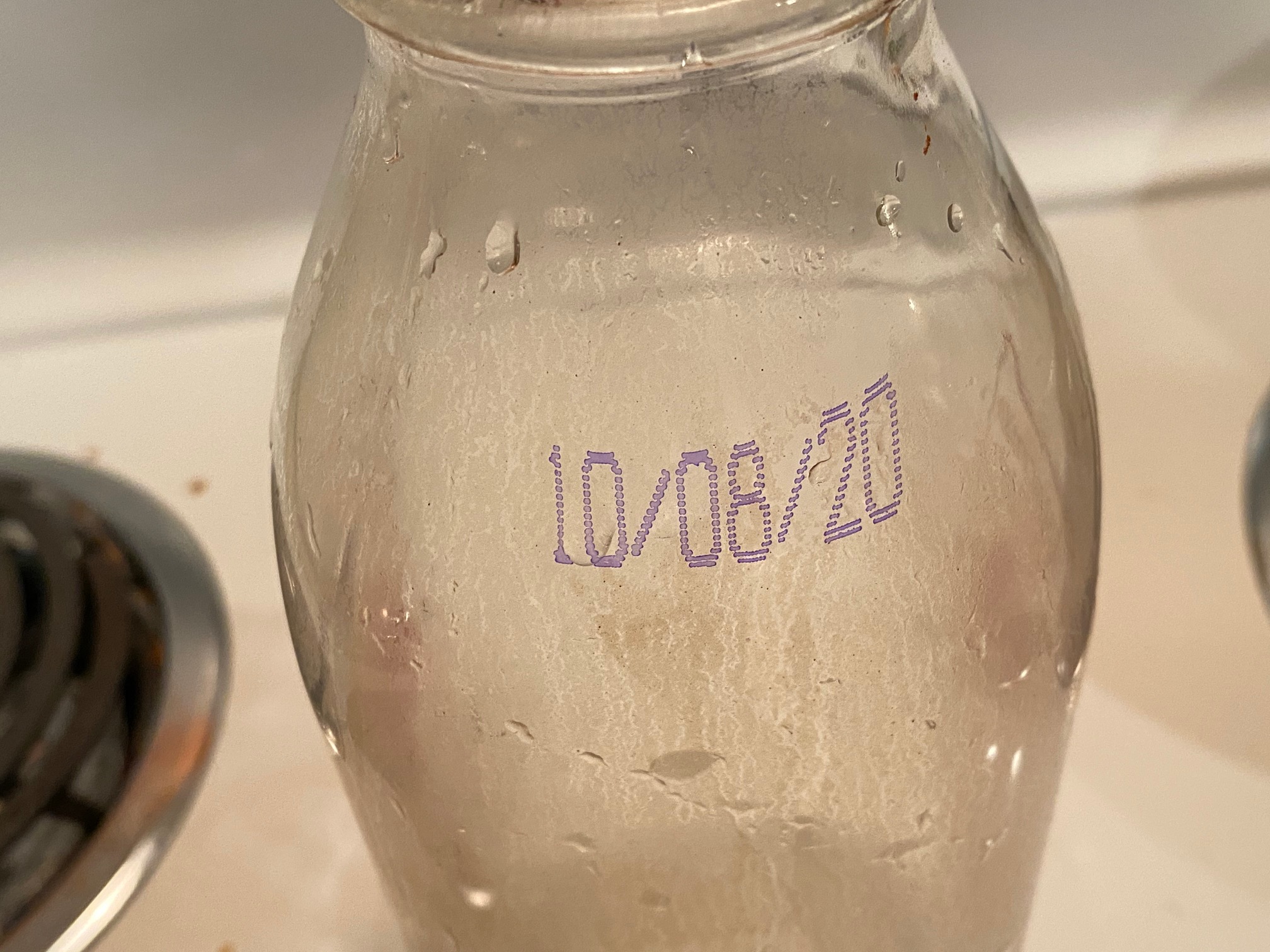Glass milk bottles from Oregon to Maine have Lead painted markings. This example from New Hampshire tested positive for 40,400 ppm Lead!!!
Introduction to Tamara Rubin
(for those new to this website!)
Tamara Rubin lives in Portland, Oregon and is a child health advocate, author, documentary filmmaker, and mother of four sons. Her young men are now 24, 18, 15, and 12. She has won multiple national awards for her Lead-poisoning prevention advocacy work (including two from U.S. government agencies). As of November 15, 2020, she has had more than 1.5 million unique individual readers visit her blog in the past 12 months (with over 3.5 million page views!) – from more than 200 countries (per Google Analytics) around the world!
It is with the help, support, and participation of these readers that she conducts and reports on independent testing of consumer goods for toxicants (Lead, Mercury, Arsenic, Cadmium, and Antimony), using high-accuracy X-Ray Fluoresence analysis (read more about that here). She goes by #LeadSafeMama on Twitter, Facebook & Instagram and has over 2,500 separate posts of information (mostly consumer goods test results) on her blog at LeadSafeMama.com.
Tamara’s advocacy work has been mentioned in print in The New York Times; the New York Post; Mother Jones; Parents Magazine; Vice.com; MNN.com; TruthOut; WebMD; the Huffington Post,;USA Today; Grok Nation, and more (too many outlets to list!) – and in other media (T.V. and radio), on the Today Show; Kids in the House; Al Jazeera English; The Voice of Russia; CBS This Morning, and through news stories on CBS; ABC; NBC, and even Fox News – as well as in countless podcasts and other interviews.
Continue reading below the image.
Monday – December 21, 2020
Reusable Glass Milk Bottles
2020(!) Sherman Farm milk bottle with Lead paint (40,400 ppm!!!) I hope my friends with the State of New Hampshire take care of this, ASAP!
This 1 quart reusable glass milk bottle from Sherman Farm (of East Conway, New Hampshire) is painted with very-high-Lead-content paint in the red decorative markings / logo markings!
Not only is the bottle painted with (highly–Leaded) Lead paint, it also has a toxic (unsafe) amount of Cadmium in the paint — which is unfortunately still common today in red–colored painted coatings and glazes! Cadmium causes cancer, and does not belong on our milk bottles (neither does Lead, of course)! I have written a LOT of posts over the years that relate to this, but below are a few of the most relevant ones…
Related posts for those interested in more information:
- Why is this a problem? (The paint is “only” on the outside!)
- Glass milk bottles from California (Lead-free).
- Glass milk bottles from Oregon (pained with Lead paint).
- All of the glass milk bottles I have tested.
- A post discussing the concern for Cadmium in consumer goods (and the levels of Cadmium that are concerning per various regulations.)
- The issue is by no means limited to glass milk bottles, click here to read about glass baby bottles that I have recently found to test positive for Lead in the painted markings.
XRF Test results for the reusable glass milk bottle (from New Hampshire) pictured above
Component #1) Red paint on the exterior of the milk bottle pictures:
- Lead (Pb): 40,400 +/- 1,100 ppm
- Cadmium (Cd): 2,612 +/- 113 ppm
- Selenium (Se): 1,216 +/- 62 ppm
- Platinum (Pt): 405 +/- 134 ppm
- Zinc (Zn): 283 +/- 37 ppm
- Titanium (Ti): 4,147 +/- 466 ppm
Component #2) Clear (unpainted) glass of the bottle:
Trace Cadmium confirmed with multiple tests
- Cadmium (Cd): 12 +/- 4 ppm
- Bismuth (Bi): 36 +/- 8 ppm
- Palladium (Pd): 6 +/- 2 ppm
- Zinc (Zn): 27 +/- 12 ppm
- Iron (Fe): 366 +/- 104 ppm
- Indium (In): 17 +/- 6 ppm
Why is this a problem?
Concern #1)
While the following concern is purely speculative, I have a significant concern for the possibility of trace Lead (and Cadmium) to end up in the milk product, given the ridiculously high levels of these two toxic heavy metals found on the outside of this bottle — a bottle that is – by design and tradition – routinely returned and reused! The fact that (trace) Cadmium was also found on the clear glass is an indicator that microparticulate Cadmium is likely migrating from the logo markings to other parts of the bottle (probably through the cleaning / sterilizing and processing required for the bottles to be reused).
Concern #2)
These bottles (if painted with Lead paint) normally will test positive with a reactive agent home test kit (like a LeadCheck® swab). Given that is the case, it is highly likely that, in normal use – holding the bottle to pour or drink, microparticulate Lead and Cadmium could (potentially) wear on to the hands of the user. This becomes even more concerning with these smaller “personal-sized” versions of glass milk bottles — where the user is more likely to drink straight from the bottle (while holding the Lead-painted exterior).
Concern #3)
It is especially disheartening to find bottles like this painted with Leaded paint because normally the families who are purchasing this product (local, “farm-fresh” milk, packaged in “environmentally friendly” reusable glass bottles) are doing so because they want to purchase something healthier for their family and – just as important a reason for their choice – they want to purchase products that are healthier for the planet. #Sigh. This is even a marketing strategy for this particular farm (and other farms like it), with the glass bottle ostensibly serving as an indicator of the quality of the contents. The mere act of the manufacturer choosing Lead paint to use for decorative elements on these bottles is concerning (regardless of any real or perceived potential for harm to the end user) because that means that the manufacturing requirements for this product support the mining, refining and production of Leaded pigments (and Cadmium-based pigments too, in this particular case) – which is a process that pollutes the planet. Below is a screenshot from the website for Sherman Farm (continue reading below the image).
How much Lead is “too much” Lead?
…including some “Fun Facts”:
- Newly-manufactured items (made today) are considered unsafe for children to use if they are finished with any paint or coating that is 90 ppm Lead or higher.
- Substrates that test positive for 100 ppm Lead (or higher) are considered unsafe for children.
- There is currently no regulatory standard setting limits for Lead in paint on modern consumer goods intended for use by adults.
- Reusable glass milk bottles are not likely considered to be “items intended for use by children” and, as such, new milk bottles manufactured today may still (legally) be painted with high-Lead painted designs and logo markings.
- For context:
- When Lead-based paint was banned in 1978, the requirement was that paint for residential use applications only (paint for houses, applied in areas that could be reached by children) must henceforth contain less than 600 ppm Lead.
- The allowable level of Lead in house paint was subsequently lowered, and today modern house paint must be below 90 ppm Lead [and most house paints now usually actually test completely negative for Lead].
- Federal funds are currently allocated for interventions [for low-income families] in pre-1978 housing when the paint is positive for Lead at a level of one milligram per square centimeter [this is roughly equivalent to 5,000 ppm Lead].
- Coming in at over 40,000 ppm Lead in the paint, the reusable glass milk bottle pictured here has Lead paint (in the exterior logo and painted markings) with levels of Lead that far exceed the standards above, under which the Feds would consider it unsafe in housing (if it were house paint – rather than paint on a glass milk bottle)!
- To reiterate points above: because it is a glass milk bottle, and because glass milk bottles are not considered to be “items intended for use by kids” – this is perfectly legal!
- It takes just a – literally – microscopic amount of Lead to poison a human being.
- All federal agencies agree that there is actually no “safe” level of Lead exposure.
- Painted markings of functional food-use glass items often become worn with normal use (look at your glass Pyrex measuring cup or vintage Pyrex bowls as examples.) As a result, the microparticulate Lead in these markings may wear off into the environment of the end-user. The potential for these glass milk bottles to wear is heightened given the intended regular reuse / washing and sterilizing required with these bottles.
How much Cadmium is too much Cadmium?
There is no Federal regulatory limit for Cadmium in decorative paint or markings on glass milk bottles. For context, however… The State of Washington considers food-use items illegal if the painted markings exceed 40 ppm Cadmium. The country of Denmark has set the regulatory limit for Cadmium (on items that may be used by children) at 75 ppm. The paint on this bottle tested positive for 2,612 ppm Cadmium.
Takeaway
I have shared this post both with the company (Sherman Farm, the milk company that produces and uses these bottles) and with the State of New Hampshire Department of Health.
I don’t know if my friends with the State are aware of this concern in general – but I DO KNOW that the folks with the State of New Hampshire Lead program are historically very proactive, and so will likely take action. The fundamental problem is that it is NOT ILLEGAL for these bottles to be painted with Lead paint (even though it certainly should be!). Perhaps the State of New Hampshire can set a precedent for other States to follow (as they have with so many other regulatory standards when it comes to protecting families from being exposed to Lead) – and possibly federal regulations will eventually be established to make these bottles safe and non-toxic (for humans and for the planet)!
“But they said that it has to have Lead in the paint in order for the paint to stick to the glass…”
In case anyone might be tempted to believe the Lead paint industry’s bull$h!t canard that (incredibly-neurotoxic) Lead is somehow a required additive in the formulation of any durable paint that will stick to glass, at least one dairy (link here) — whose similar reusable glass milk bottle with a painted logo I also tested recently — is somehow managing to paint the logo markings on their reusable glass milk bottles with LEAD-FREE paint!
Of interest:
- While I have found Lead painted milk bottles in Oregon, New Hampshire and Maine – the only dairy I have found to have bottles with Lead-free painted markings is in the state of California.
- This is of course not surprising given California’s decades-long history of tighter regulatory actions when it comes to toxicants.
- In California awareness of the issue of toxicants in consumer goods is more pervasive, but as far as I know, chemistry and physics, remain a constant, and if Lead-free markings on glass bottles are possible in California, they are possible everywhere.
As always, thank you for reading and for sharing my posts. Please let me know if you have any questions and I will do my best to answer them personally as soon as I have a moment (which might not be right away since I have kiddos underfoot and no childcare as a result of the pandemic!)
Tamara Rubin
#LeadSafeMama
Never Miss an Important Article Again!
Join our Email List







This is so frustrating and disheartening. We try to do our best to provide fresh milk and the best options for our children but we get poisoned in return. Lead and cadmium. Very high levels at that. Please use lead-free and cadmium free paint. Try black instead of red. Or white. Anything else… please.
Does red Brandani dish appears new have led or cadmium?
Also Le creuset red baking dish .
Tganksyso much!